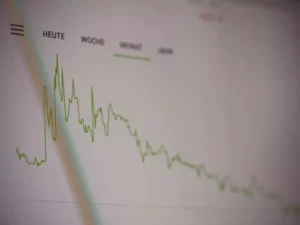In a classical economic definition, an economy is a system of interacting private production with the rest of society. In an economy, goods and services that are produced and exchanged are used on a regular basis to meet the ends of those operating and living in it. Classical economists further defined an economy as a system in which the total value of goods and services produced exceeds the value of the aggregate supply of them available to provide consumer satisfaction. A key assumption of classical economic theory is that the value of money lies in the extent to which it can be counted or redeemed.
 An economy can be thought of as the sum of individually owned goods or services relative to the total value of the aggregate supply of them that can be found in the market. Economists call an economy a “market economy” when they consider the system in which goods and services of different economies compete for scarce goods and services. The classical school of economists, who include Adam Smith, Charles Dickens, and John Kenneth Galbraith, considered the system of competing markets to be an economic system and classified economies into two general types: the market economy and the centrally planned economy.
An economy can be thought of as the sum of individually owned goods or services relative to the total value of the aggregate supply of them that can be found in the market. Economists call an economy a “market economy” when they consider the system in which goods and services of different economies compete for scarce goods and services. The classical school of economists, who include Adam Smith, Charles Dickens, and John Kenneth Galbraith, considered the system of competing markets to be an economic system and classified economies into two general types: the market economy and the centrally planned economy.
Planning is the process by which a central body, such as a government, determines the level of taxation required to achieve the desired macroeconomic objectives. macroeconomics affects economic growth by influencing the degree to which goods and services of different economies are priced relative to one another. Price level changes affect purchases and production, causing employment changes. Central and national banks, including the Federal Reserve, play an important role in controlling inflation. In addition, macroeconomic concepts, such as economic growth, unemployment, inflation, and financial stability, are widely used in the decision-making process of businesses and the operation of the economy as a whole.
On the other hand, microeconomics deals with the movement of resources between economic units. The production, distribution, allocation, cost, and revenue aspects of businesses affect the operation of the economy. Within a micro-economy, consumers make decisions about the allocation of resources among different enterprises based on their own personal and economic needs. Economic theory indicates that it is incorrect to assume that consumers in isolated markets will coordinate efficiently.
Microeconomics is closely related to macroeconomics but is more focused on the business sector. Microeconomics attempts to capture the behavior of small, individually owned firms. These firms exhibit distinctive features of business organization that distinguish them from large corporations. The distinguishing characteristics of a micro-enterprise include small financial assets and small sales activity. Small firms are characterized by a high dependence on short-term financing, limited opportunity for growth, short-term profit sharing, high dependence on specialized technology, and a high rate of entrepreneurial risks. The relationship between the two theories can be seen in the modern attempt to develop a theory of the economy that attempts to integrate all economic units.
macroeconomics is usually understood to refer to the broad field of economic concepts and practices that have long been the cornerstones of classical economics. This theory is a fundamental part of the foundation of modern economic thought. According to this school, all economic activity in a country is a part of a larger process of economic development. The theories of macroeconomics attempt to provide a comprehensive explanation of how national economies develop and interact with one another. These theories also describe the sources of long-run economic growth, provide a description of the processes through which growth occurs, and explain why particular economic policies are successful or unsuccessful in aggregate.
Economists believe that there are two essential components to a functional economy: a productive capacity and a physical capital stock. A productive capacity refers to the ability of a business to produce goods and services that are priced competitively. Physical capital refers to the fixed capital assets that a business uses to make goods and service in the economy. A successful economy must have both a productive capacity and a sufficient level of physical capital. The goods and services that a business produces in relation to its physical capital stock, as well as its productive capacity, dictate the amount of money that the economy can earn and spend, thus stimulating long-term economic growth.
A successful economy must also have a market for private property. In economic theory, there is a positive correlation between the level of private property and the rate of long-term interest rates. If an economy has too little private property, or if it does not regulate the price of land and property sufficiently, then the government may seek to stimulate the economy with taxation. Private property is particularly important in an open economy such as a nation with open trade and free association. In such a system, entrepreneurs can invest freely in the development of the country’s resources, leaving governmental control over certain aspects of business investment to be left to the consumers.
